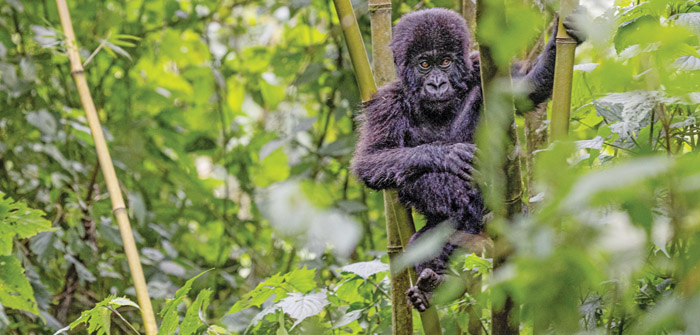(Photography by Sue Dougherty)
As a veterinarian, Sue Dougherty has a special empathy for animals. As a wildlife photographer, she extends this sensitivity to the wild creatures she captures on camera. “I’m always trying to create intimacy and connection with the animals,” she says.
Dougherty traveled extensively during the COVID-19 pandemic to places as diverse as Alaska and Rwanda to photograph their native species. The year 2020 “was a bust because of COVID,” she remembers. A number of trips Dougherty scheduled for 2020 were postponed to 2021. Last year, as a healthcare worker, she got her COVID vaccinations early and, armed with negative COVID tests taken just before leaving, and masking in all public situations, was able to travel when many other people would not.
The actual travel was complicated, she reports, since different trip leaders, airlines, states and countries had varying regulations regarding COVID-19. In order to travel she made sure that the guides were all serious about COVID safety. All trip participants were vaccinated, tested negative before departure and they formed a “pod” of travelers who interacted with each other but exercised caution with others. In Alaska, they never went out to eat, for example, eating only at the hotel, on the boat or ordering room service or take-out food. They spent most of their time outside photographing, so seldom had contact with others.
Dougherty traveled to Alaska to find bald eagles, Yellowstone National Park in the winter, Florida to shoot birds, Arizona for a workshop on photographing hummingbirds, the San Juan Islands for red foxes and British Columbia in the fall to snap bears. Trips abroad were to the Galapagos Islands, Kenya and Rwanda. Photographing such different creatures requires different skills. “It’s more difficult to photograph eagles flying versus a bear standing still,” Dougherty explains. “You never know what you’re going to get.”
In Rwanda, she was impressed by how vigorously the country has rebounded from its nefarious genocide in 1994 (when nearly one million people were killed). Rwanda has embraced eco-tourism for its gorilla population carefully, she says. In the Volcanoes National Park, where the endangered population of mountain gorillas live, a visiting group, accompanied by park rangers, is allowed to view the gorillas for just one hour. Everyone must wear a mask to eliminate the chance of infecting the primates with human diseases. Only one group of visitors is allowed per day. “You are carefully directed to never interfere with them,” she says.
One of Dougherty’s memorable encounters occurred on her Galapagos trip. While walking on a beach adjacent to sea turtle nests, she noticed a frigate bird flying low and carrying something in its beak, which it dropped on the sand. She hurried to see what it was: a baby turtle, still alive. The tiny creature was stunned at first from being dropped from a height but soon gathered its strength and raced to the ocean to begin its new life. The tiny turtle made a great subject for a few adorable pictures and a happy little video, but the main impact was in watching the little one follow its instinct to the ocean waves.

